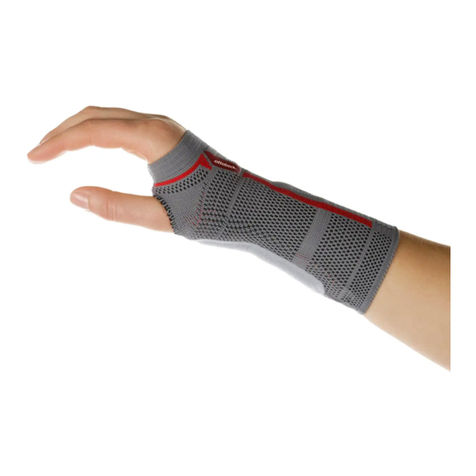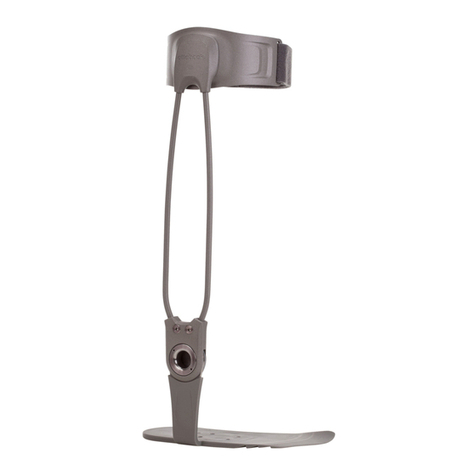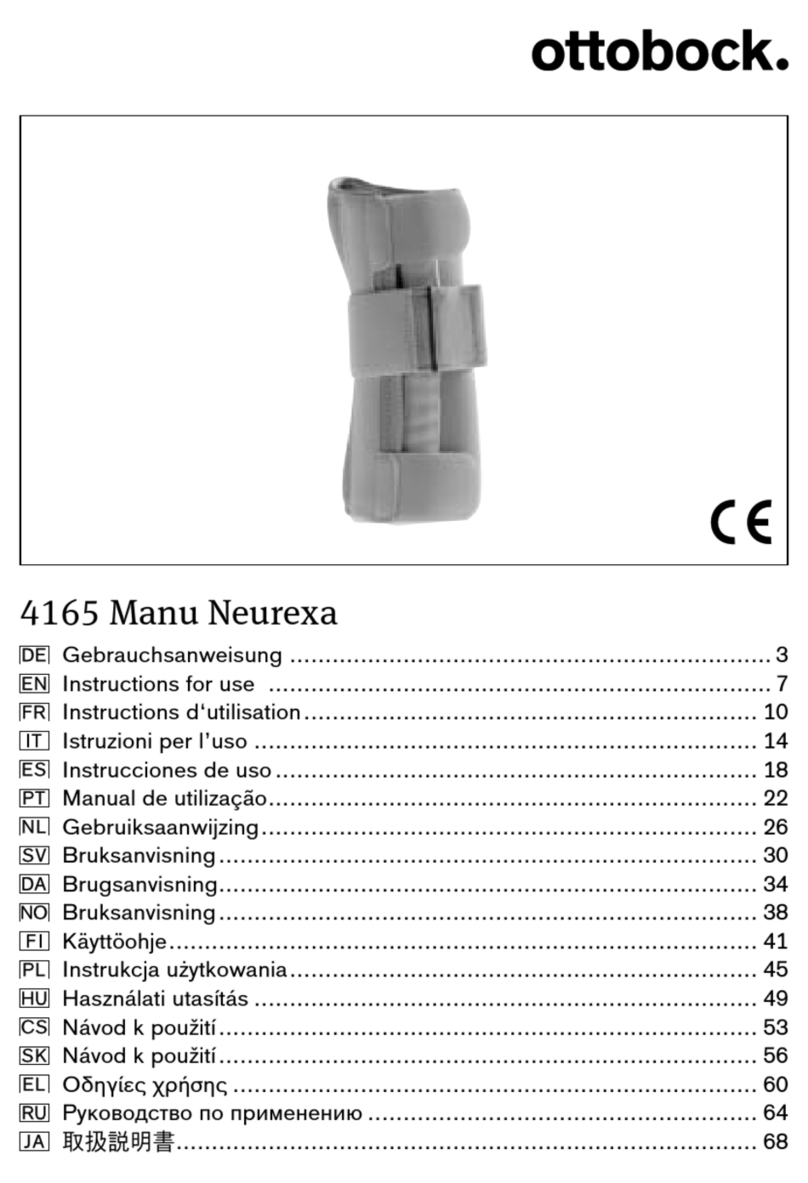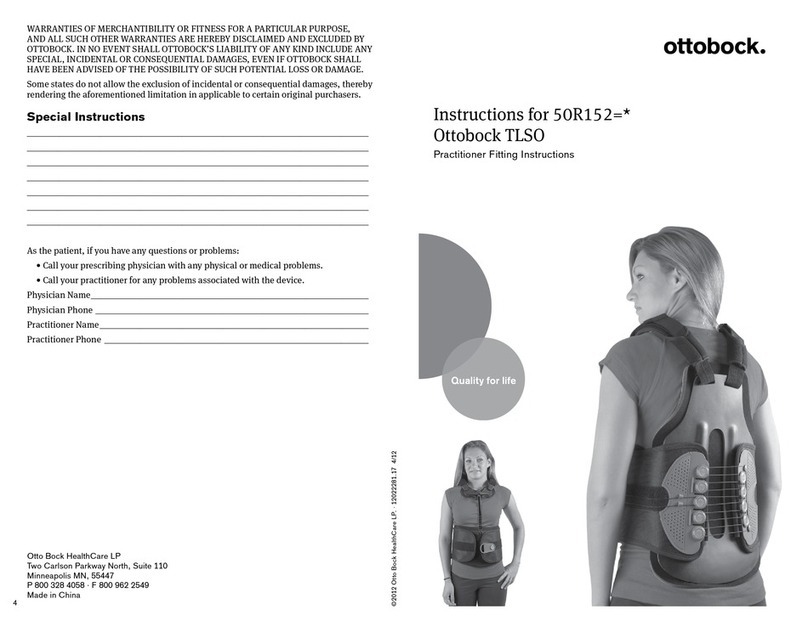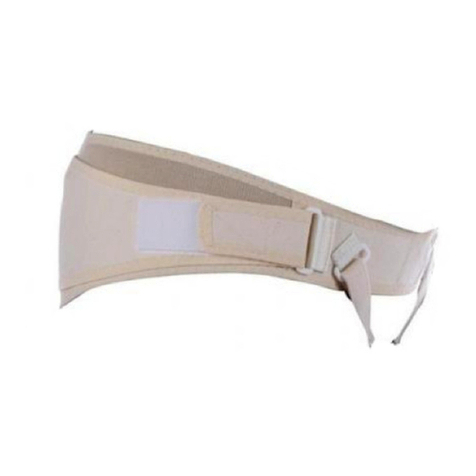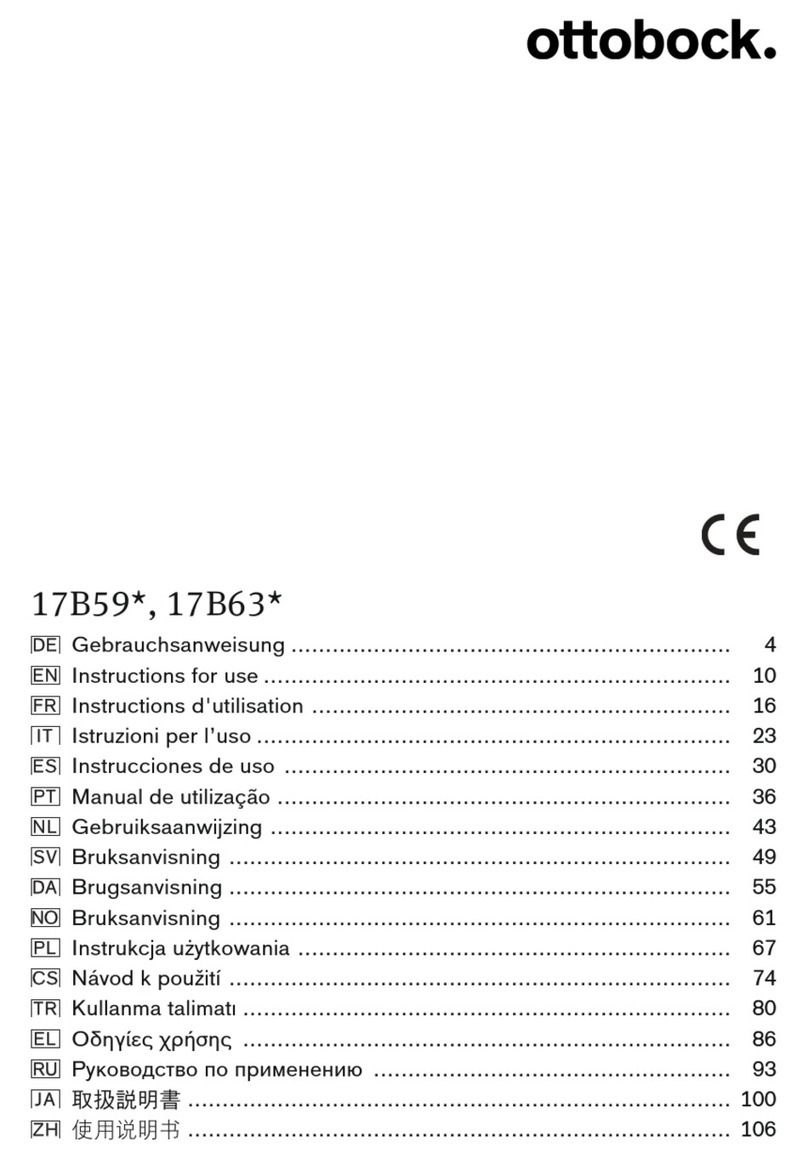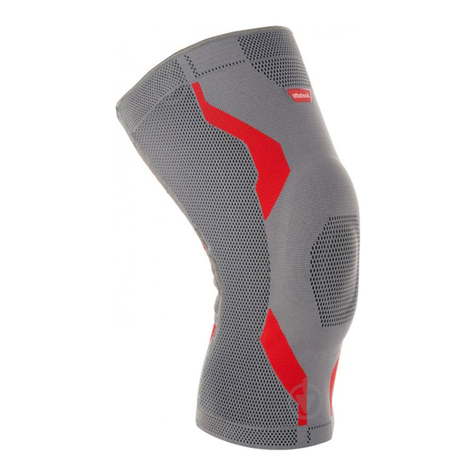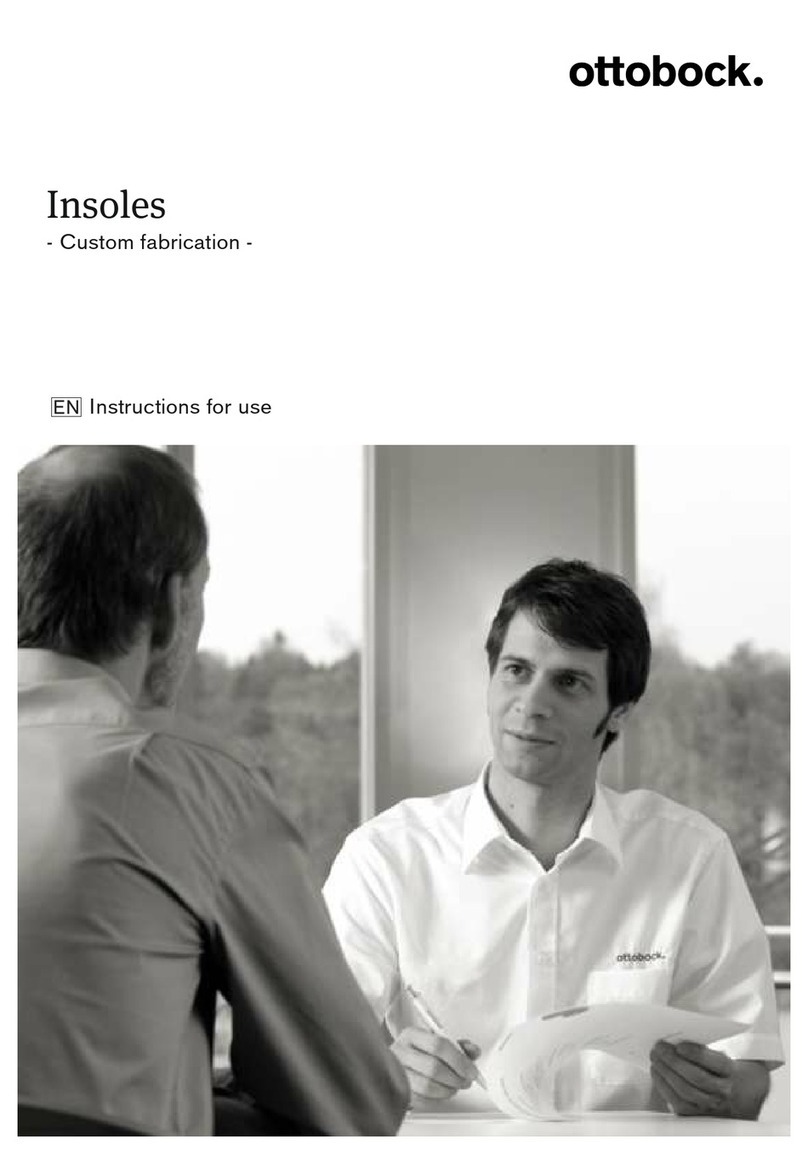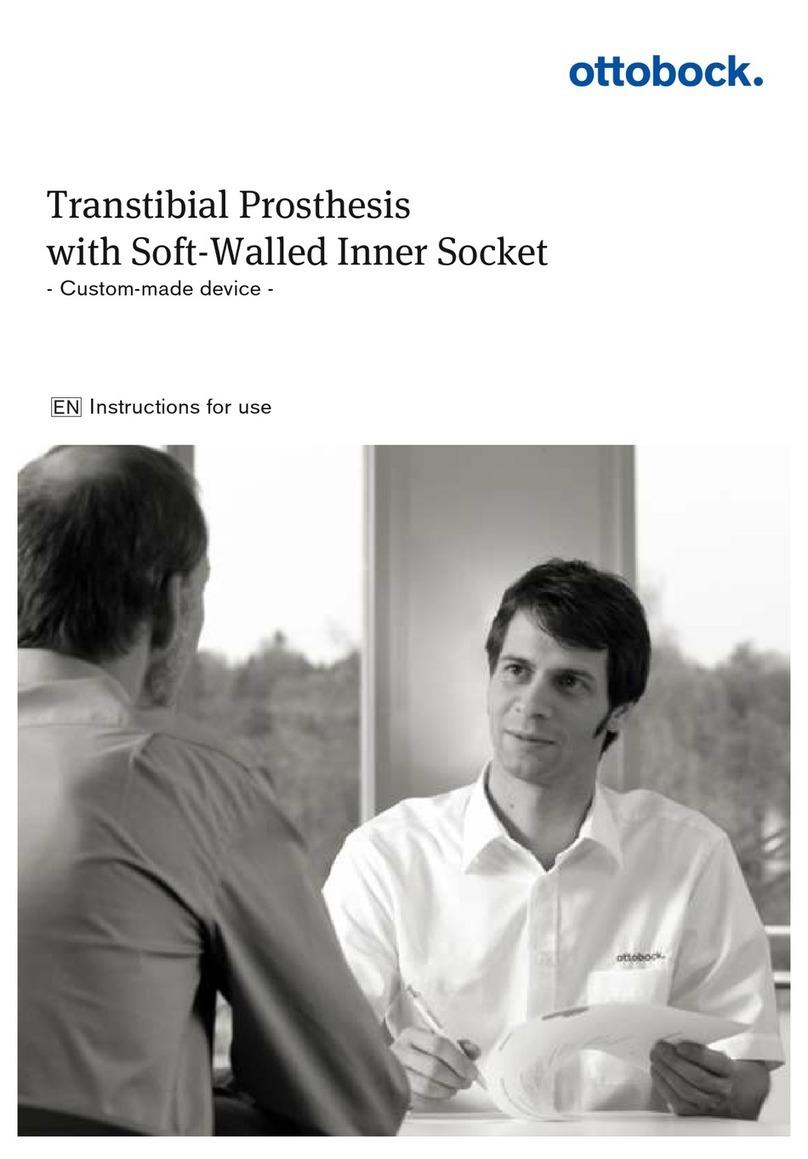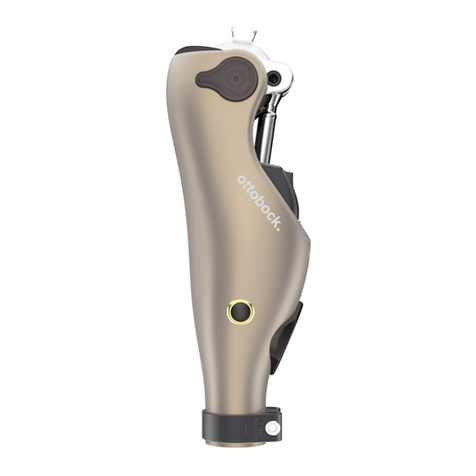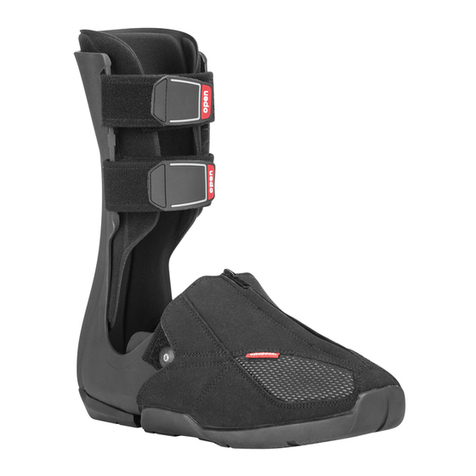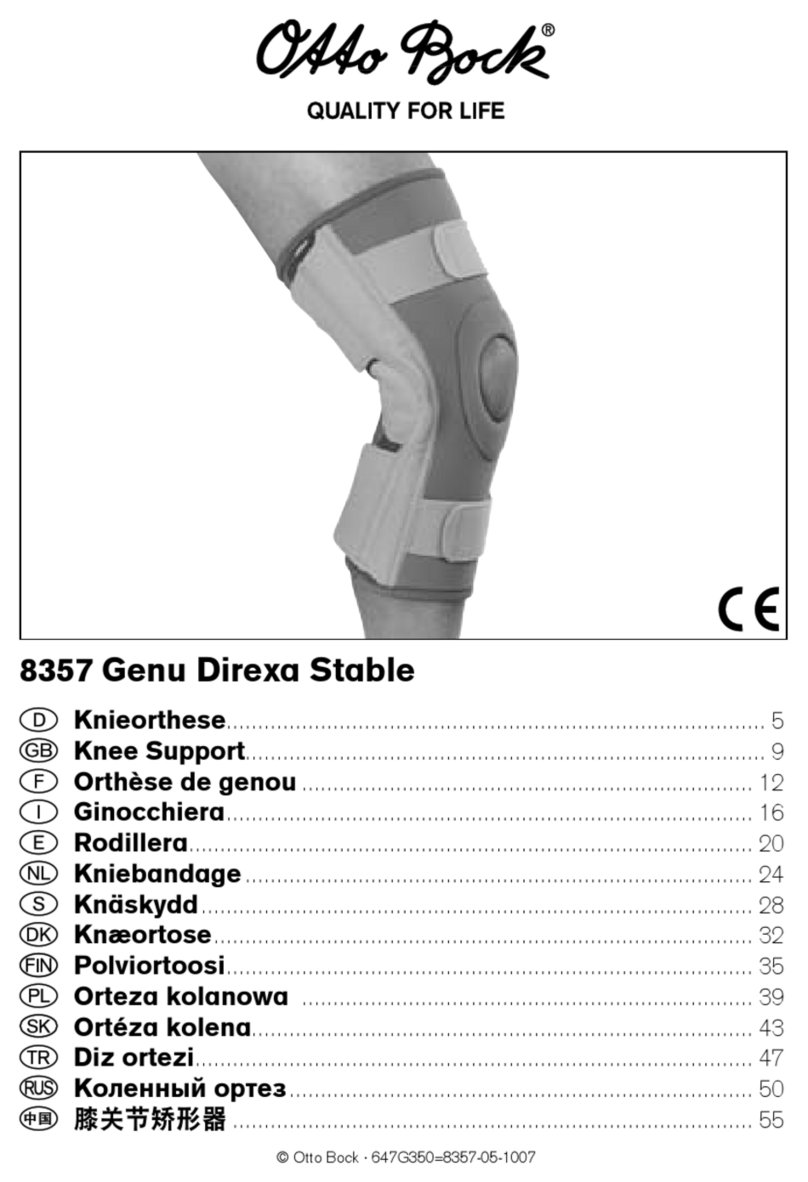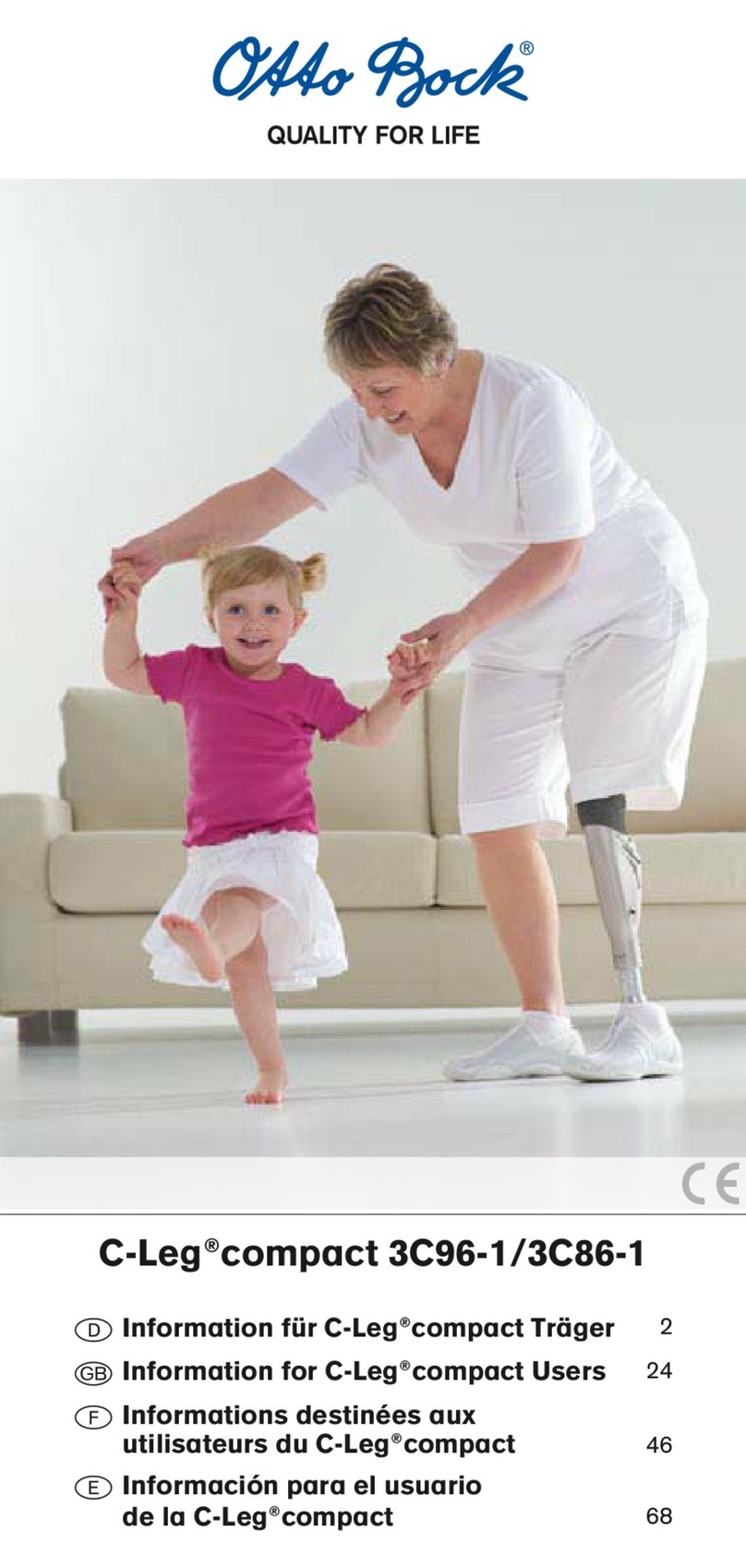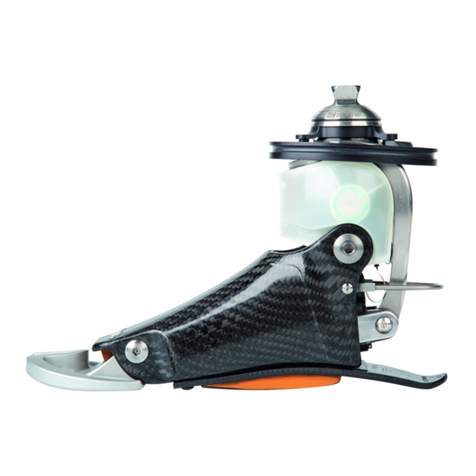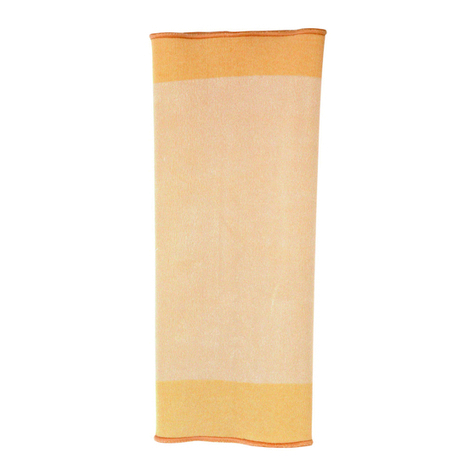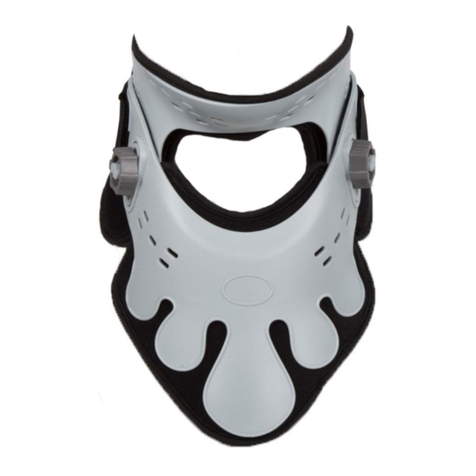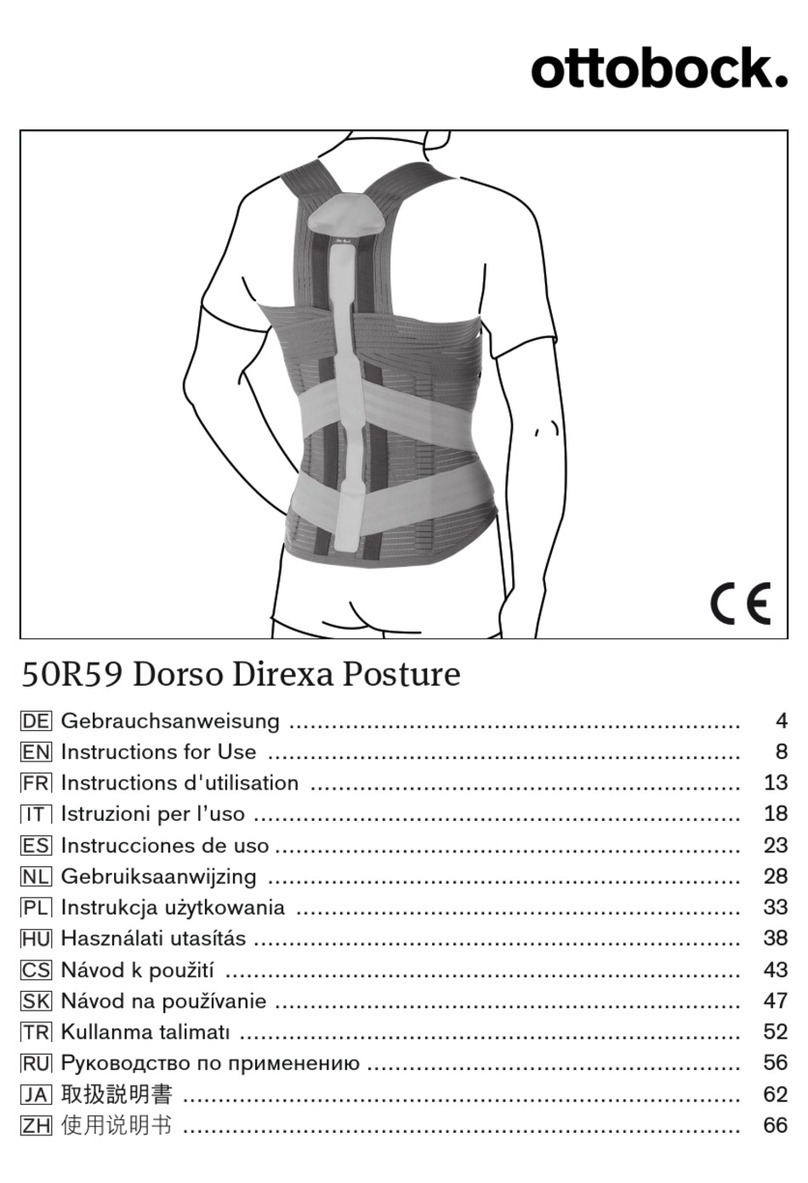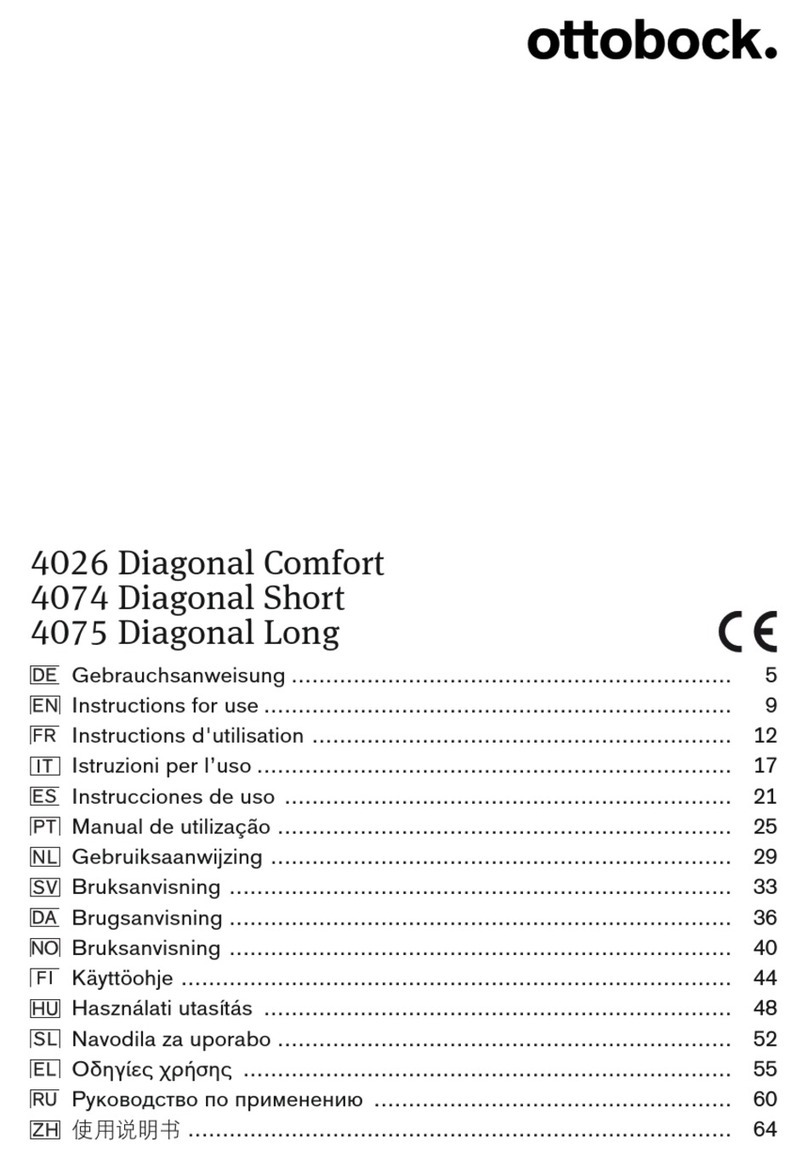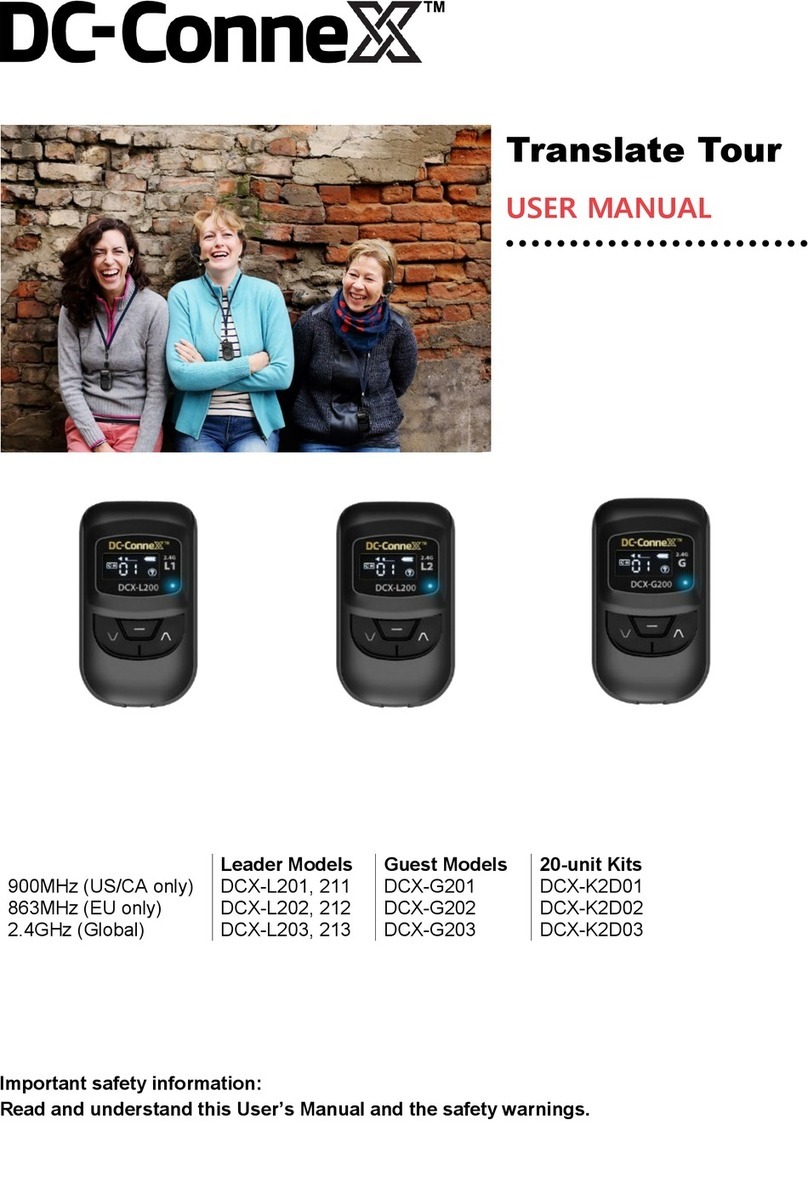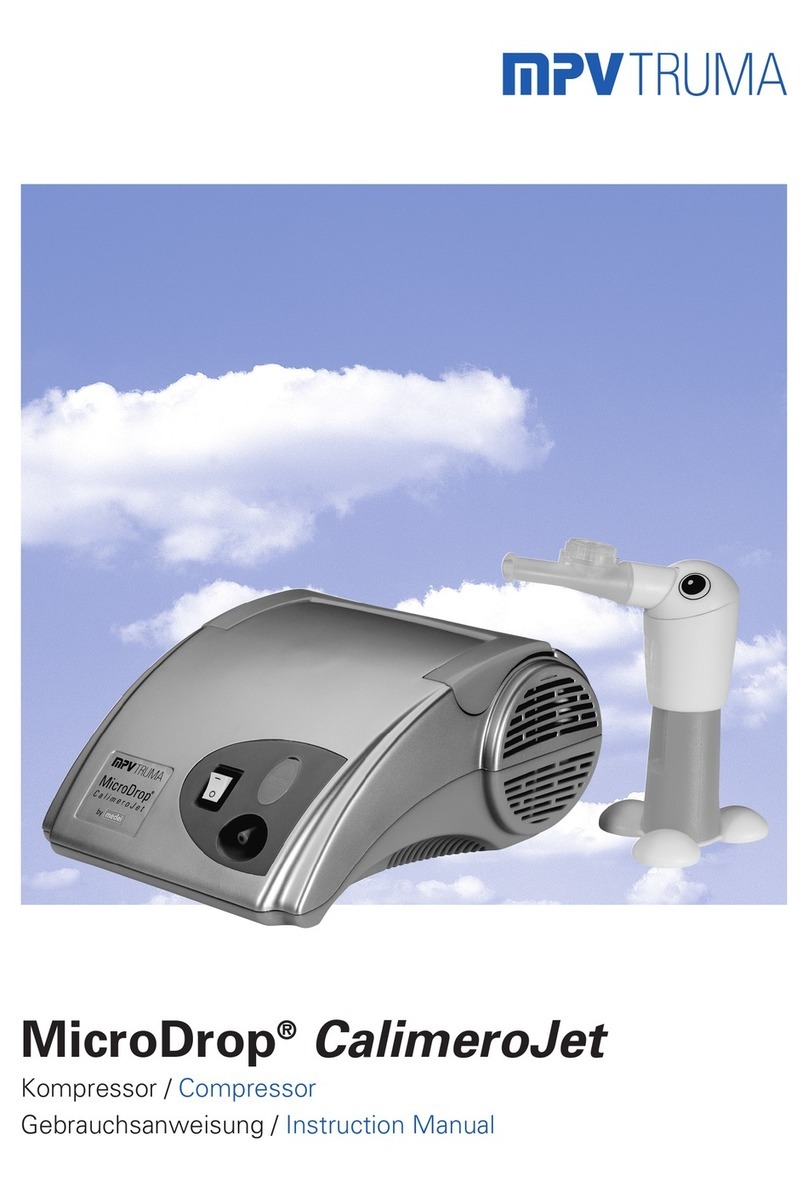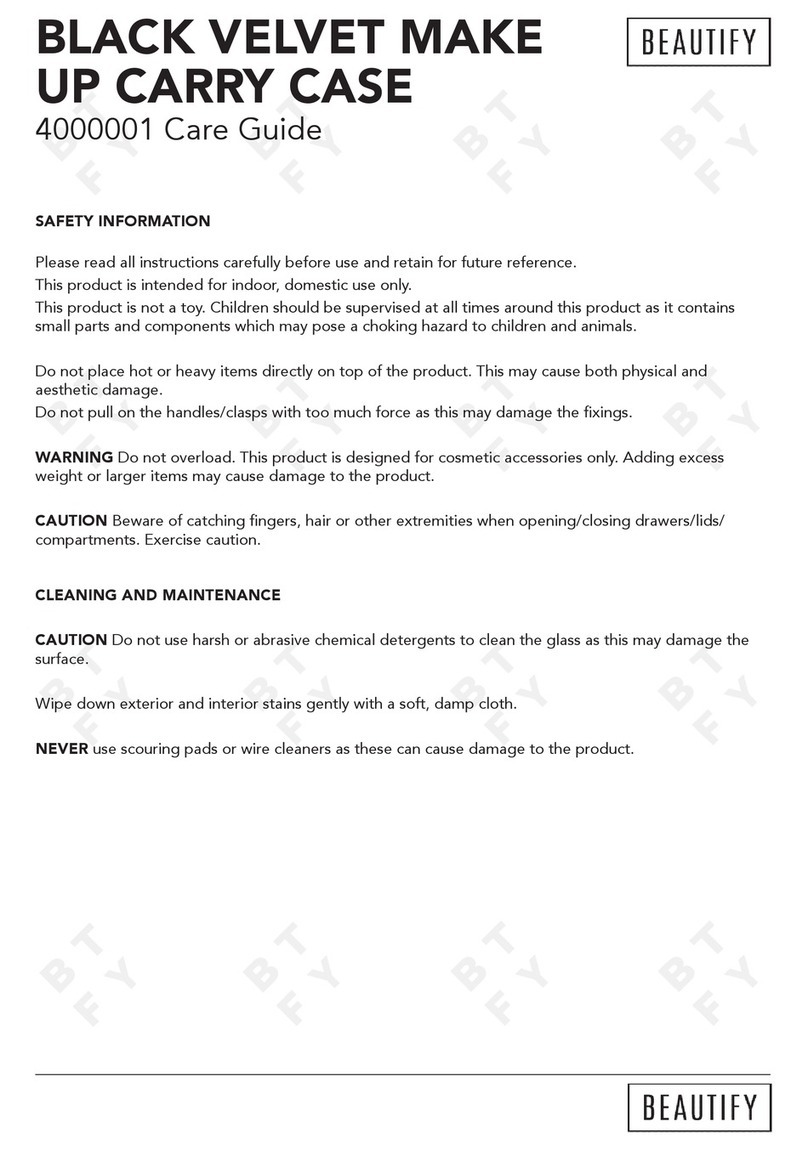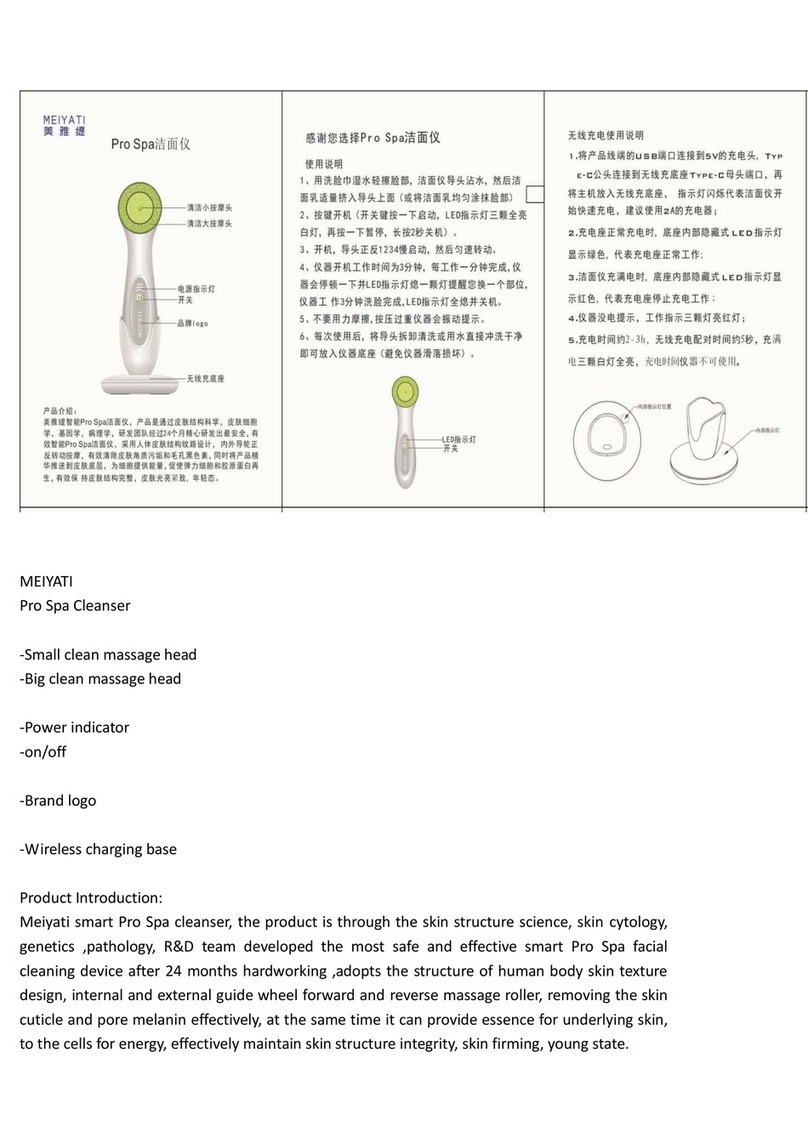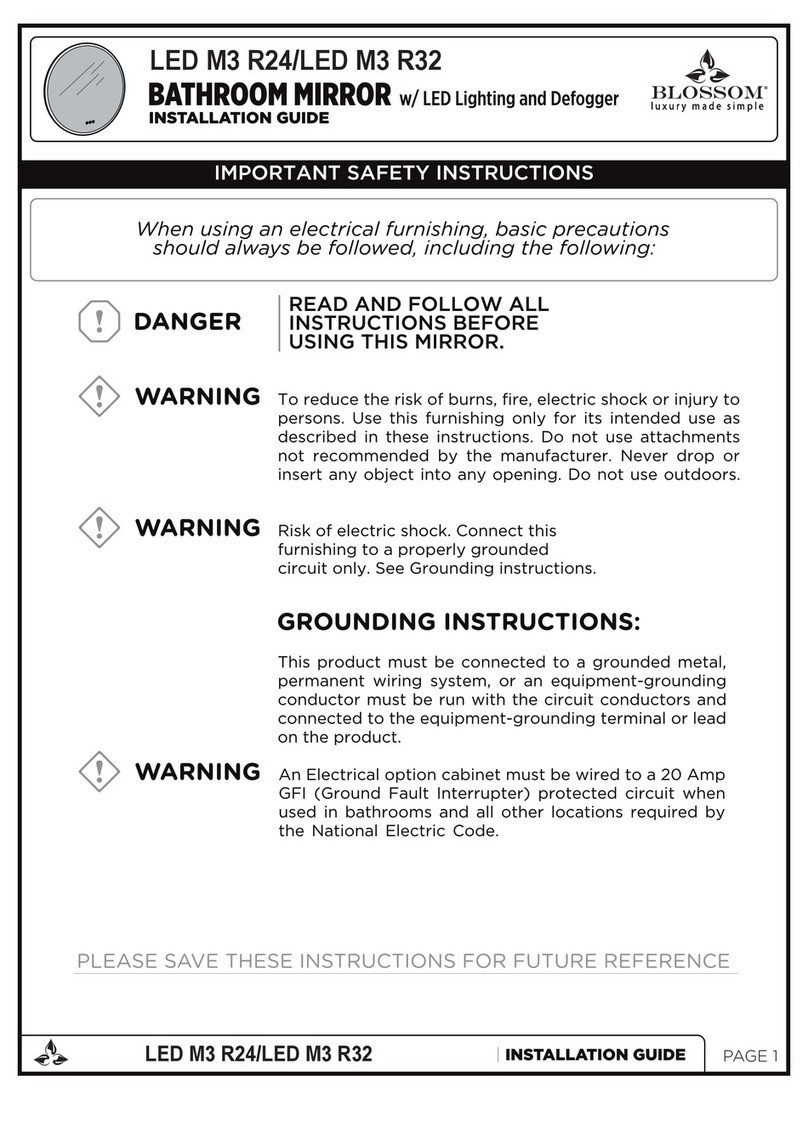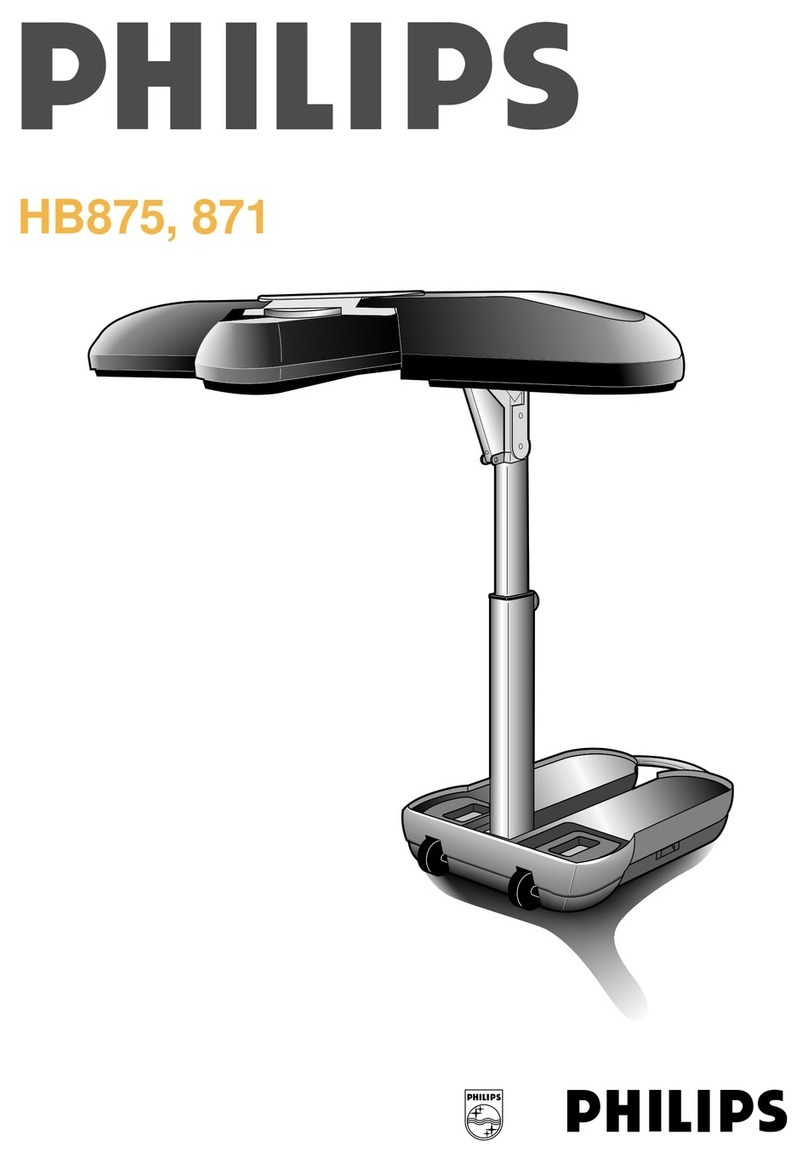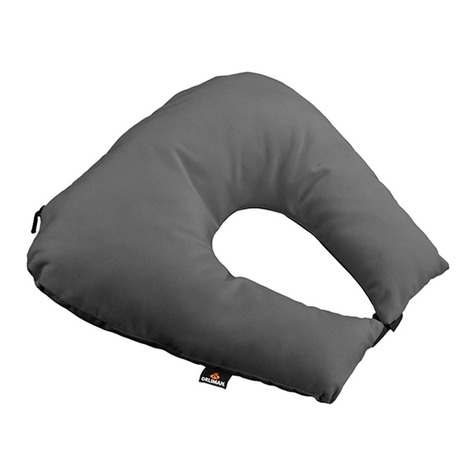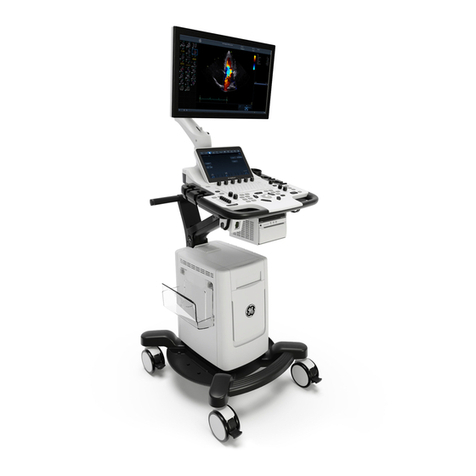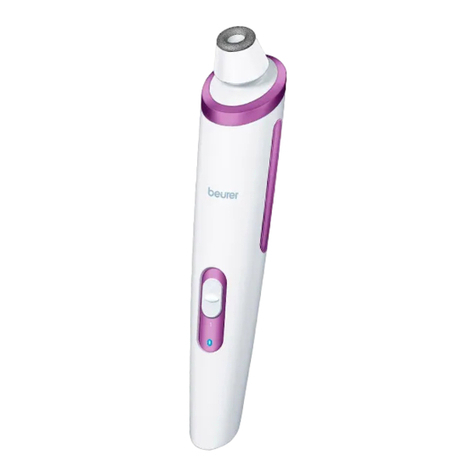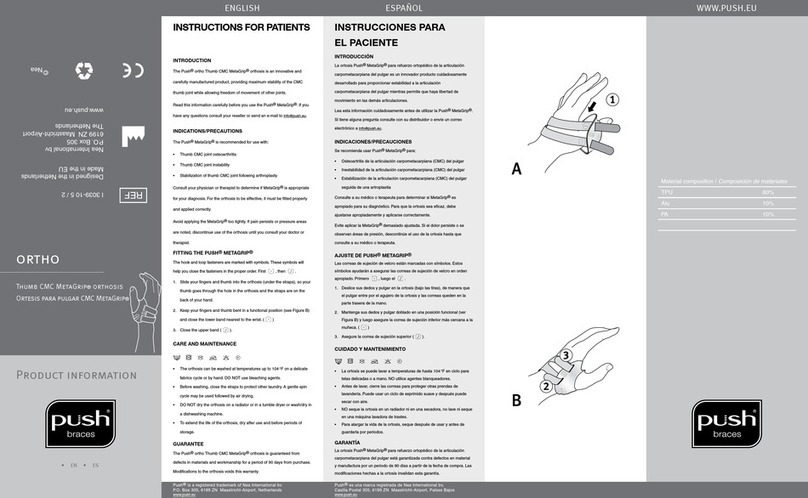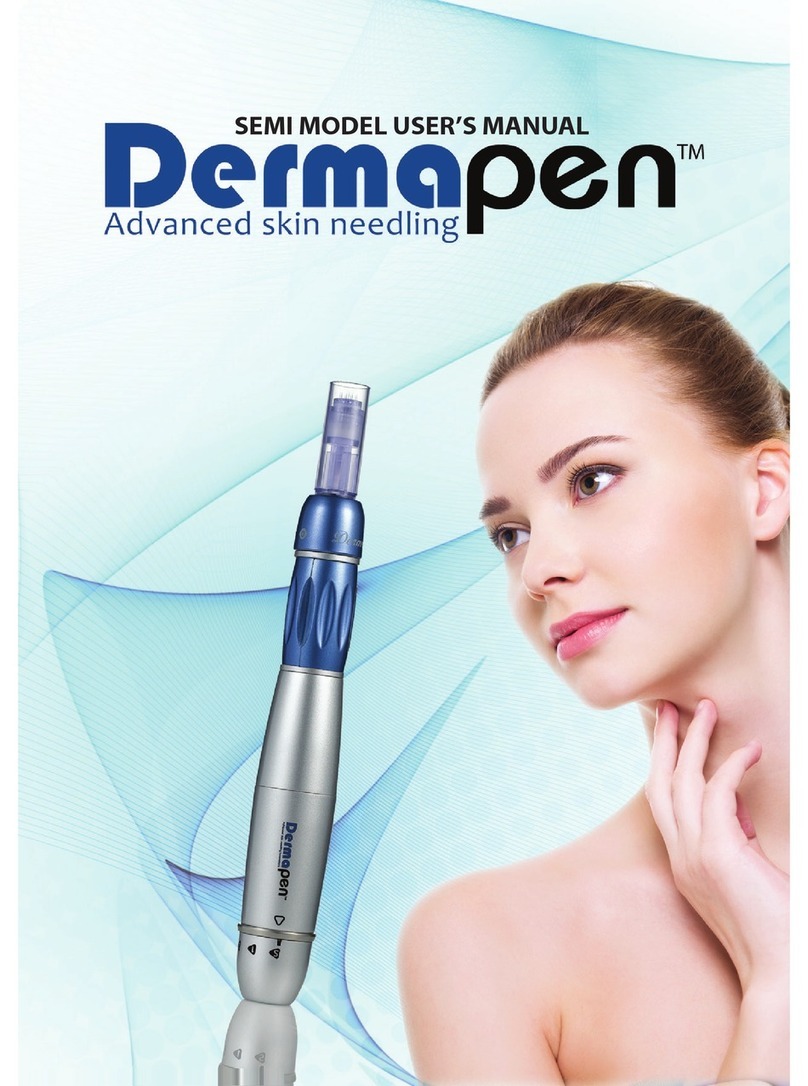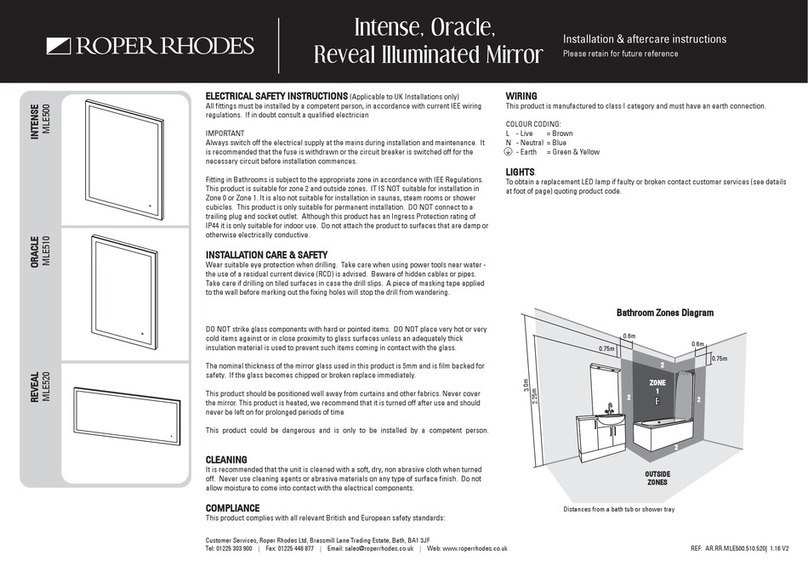
1 Foreword
INFORMATION
Date of last update: 2021-04-29
►Please read this document carefully before using the product and observe the safety
notices.
►Obtain instruction from the qualified personnel in the safe use of the product.
►Please contact the qualified personnel if you have questions about the product or in case of
problems.
►Report each serious incident related to the product to the manufacturer and to the relevant
authority in your country. This is particularly important when there is a decline in the health
state.
►Please keep this document for your records.
2 Description of the Design and Individual Components
Your orthosis primarily consists of a lower leg component and a foot component that may have an
integrated length compensation mechanism. The joints may be free-moving, limited in their move
ment or locked. Joint functionality may also be supported by spring mechanisms. The adjustment
range offered by adjusting the closure straps is limited. Please also refer to "Volume fluctuations"
in section4.
The static alignment of the foot component and lower leg component has been adapted to your
individual needs and takes the heel height of your shoe into account.
The Ottobock team has informed you about the features of your orthosis.
3 Areas of Application and Usage Restrictions
Your orthosis is an orthopaedic appliance that makes it possible or easier for you to stand and
walk, or fulfils other specific requirements relevant to your condition. The Ottobock team adapted
the orthosis to the loads expected at the time of fitting. If your activity level increases in the course
of use, adjustments may be required. Changes will also have to be made if your physical condi
tion worsens and more support from the orthosis is needed.
Please consult your doctor regarding the daily duration of use and potential therapeutic measures
(e.g. occupational therapy or physical therapy) to improve your performance. First-time users in
particular are at first unaccustomed to wearing an orthosis and have to learn how to handle their
orthosis. Applying and removing, sitting, standing and walking must be practised. Ways to handle
a potential fall must also be explained. Your doctor, physiotherapist or orthotist can provide you
with additional advice on orthosis training.
In general, you should not experience too much discomfort when wearing your orthosis. Excess
ive pressure can cause complications, e.g. pressure sores or joint problems. If you have any
questions or concerns about your orthosis, please do not hesitate to contact your orthotist.
4 Medical and Therapeutic Aspects
If problems in the region of the spinal column occur in spite of an objective improvement of stat
ics, please consult your orthotist.
Volume fluctuations
Body weight fluctuations and swelling in the leg can lead to problems with the fit, resulting in
functional deficits. The use of compression stockings can help prevent this problem. However, be
sure to consult your doctor.
4
